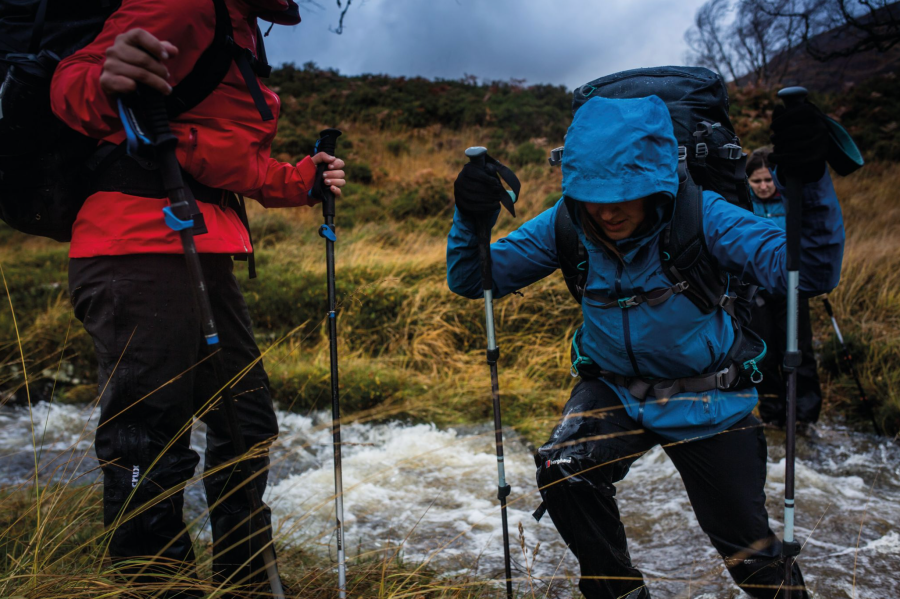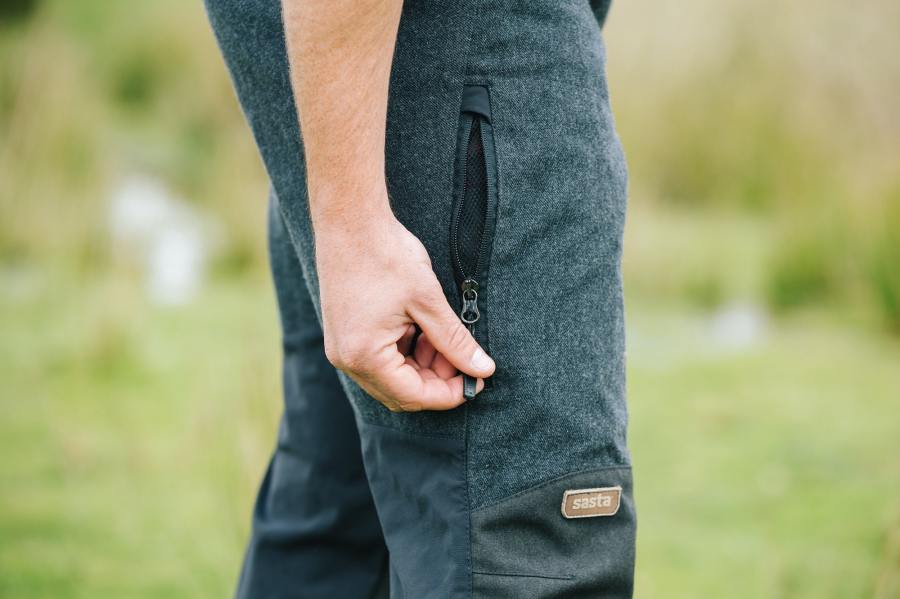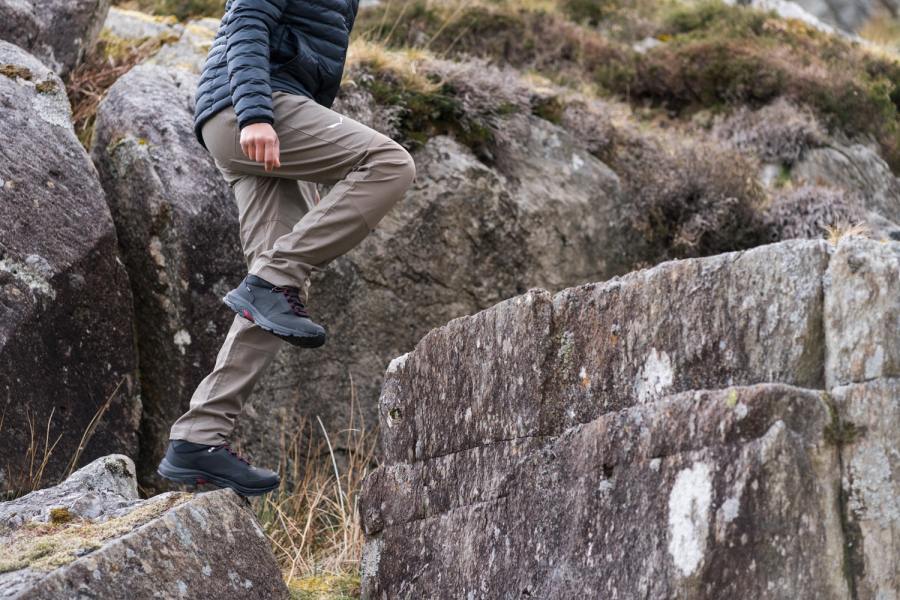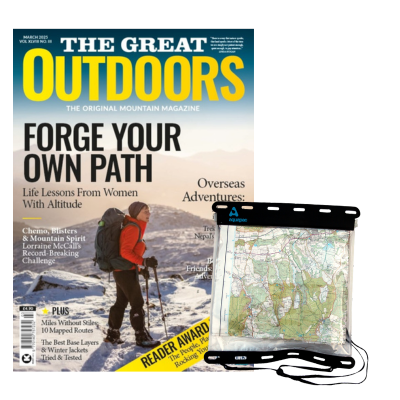Anyone who has attempted to bum-shuffle a down scramble or straddle a stile too enthusiastically will understand how important a good pair of hiking trousers can be. Embarrassing exposures aside, they need to be comfortable to walk in for hours on end but remain durable with good articulation in the face of rough terrain and strenuous activity. They need to protect you from the elements but allow your legs to breath through hours of walking. Then there are all the variable features such as vents, zips, waistbands, and storage, to name a few. Essentially, crafting these garments is a balancing act between comfort and toughness. So, what are the best materials for hiking trousers? Let’s take a look.
What should hiking trousers offer?
There is no one-material-fits-all rule when it comes to the best materials for hiking trousers. The ideal material will depend on what you’re doing, where, and when! For example, if you’re scrambling in winter you’ll need warmth, durability and flexibility whereas breathability and comfort might suit a multi-day trek in summer better.
For almost any adventure in the UK, you’d also be wise to invest in a pair kitted out with a DWR (Durable Water Repellent) coating – such as the Black Diamond Technician Pro Alpine – and reproof them after a drenching. Nikwax and Grangers both sell trusted DWR care kits. Look for DWR treatments and products that are PFC-free. This means they don’t employ harmful chemicals called PFCs in their treatment procedures.
While organic fabrics can be treated to withstand the elements and indeed can have naturally occurring moisture-wicking qualities, DWR treatments are often complementary to synthetic fabrics. This is why hiking trousers generally are made with at least a percentage of synthetic material.

Iona Andean on a river crossing. Credit: Jessie Leong
Many outdoor brands have developed their own signature fabric blends to balance the qualities you need look for in a good pair of hiking trousers across three seasons. Below, we’ll look at individual fabrics and common blends. For the eco-conscious, brands (Patagonia and Fjallraven are just two examples) often include the percentage of recycled materials used and whether any cotton blended into the mix is organic, too.
Likewise, hiking trousers will often feature panels of high-abrasion fabrics and reinforcements in hotspots such as the knees and stretchier fabrics at the seat and crotch. These fabrics will often differ from the main trouser so check the manufacturers labels in detail for a full breakdown of fabrics and intended use before wear.
The best materials for hiking trousers
Softshell
If you own any outdoor kit that’s both tough and water-resistant, chances are you’re already well acquainted with a softshell fabric. Manufacturers have developed their own blends for specific products but generally, softshell simply means a blend of polyester, nylon (or polyamide) and elastane. This woven blend makes softshell a classic all-rounder for outdoor use – and one of the best materials for hiking trousers. But like any outdoor gear, it’s not infallible and does require ongoing care and treatment to keep its performance.
Wool

Sasta’s Antons, an example of walking trousers made from wool. Photo: Chris Johnson
On the other hand, a material with many naturally occurring qualities that can be handy outdoors is wool. While wool trousers are probably the preserve of the colder months, wool’s warmth, durability and innate water and odour-resistance makes it worth considering as one of the best materials for hiking trousers in winter. Just be aware that wool might itch a bit if not treated!
Nylon
Nylon has become a common occurrence in the great outdoors thanks to the proliferation of excellent hiking and trekking leggings favoured by women for whom finding hiking trousers to fit is still a constant struggle. Thankfully, nylon offers the four-way stretch needed on climbs and scrambles and – as in some designs – is easily constructed with reinforced panelling at the rear and knees. It’s also a breathable enough fabric that you could wear a pair of nylon leggings underneath waterproof over-trousers or winter trousers, keeping your comfortable but eliminating the risk of cold from the elements. Of course, you’ll also find nylon in many hiking trouser fabric blends, alongside elastane and polyester.
Polycotton
While cotton alone is not advisable for outdoor use – think tracksuit bottoms or jeans that retain water and chill you to your core – when you combine cotton with polyester you’re onto a winner. More expensive than cotton but cheaper than pure polyester, polycotton provides an affordable happy medium that can be treated to offer good breathability, water-resistance, articulation. Thanks to the ‘poly’ it can also cope well with abrasion in comparison to cotton.
Hemp

The Salewa Alpine Hemp Light trousers in action. Credit: Chris Johnson
Once again, on its hemp is not a material fit for purpose outdoors. But as with cotton, its comfort can be combined with other tougher fabrics to create an environmentally-friendly and very lightweight summer hiking trouser. Patagonia, Salewa and Vaude all have hemp in their hiking trousers offerings.
We’ve included hemp in this list to demonstrate that the list of materials suitable for hiking trousers is always growing, subject to excellent innovations in garment technology, and with the right blend it’s largely down to personal preference.
Of course, the quality of any outdoor gear is not just down to its material parts. For more information on finding your perfect fit, read Will Renwick’s guide to choosing hiking trousers for The Great Outdoors.
Read more: “Hiking is for everyone – but only if you’re the right fit…”








